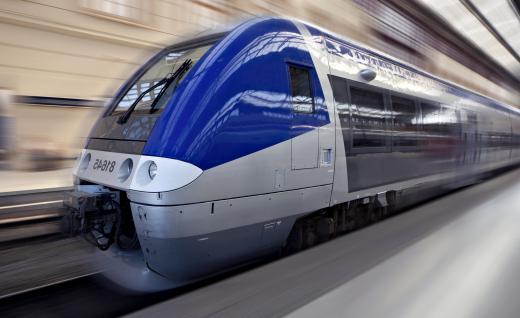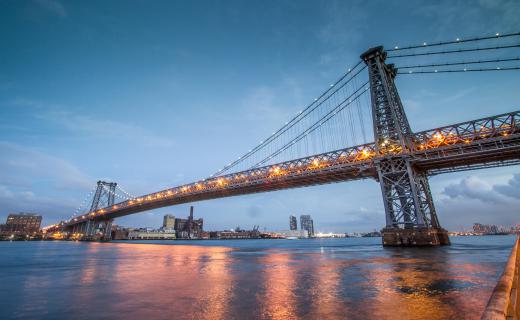What Is a Railway Bridge?
A railway bridge is a structure designed to carry freight and passenger trains across an obstacle in the landscape. These bridges represent complex feats of engineering and design, and often require the cooperation of a team of engineers and builders. While many railway bridges are designed to cross bodies of water, others span valleys, canyons, or other obstacles that once prevented rail travel within the area. A railway bridge often has a major impact on travel, allowing for shorter trips and faster freight delivery, as the train no longer needs to take a longer route around the obstacle. As the popularity of train travel declines, railway bridges are often preserved or reconfigured for other uses, such as hiking or bike trails.
The 19th and early 20th centuries represented the golden age of rail travel in the United States (US). During this time, people had few options for travel outside of the railway, making the railway bridge a matter of supreme important during this period. The first bridges were built from wood and stone, while later models were constructed from cast or wrought iron. The introduction of steel allowed railway bridges to span great distances and cross areas that were once deemed impossible. Advancements in welding technology also helped engineers developed bigger and better railway bridge designs.

The basic railway bridge consists of a simple beam or girder, and is designed to cross short spans, such as a small creek. The addition of triangular trusses allowed for longer, stronger railway bridges. Railway engineers also took advantage of the natural strength of the arch to design bridges with an arch-shaped support. Suspension bridges rely on high-tension cables for support, which allows them to span even greater distances than earlier bridge designs. The most advanced units featured things like double-decker construction, allowing railcars to share the same bridge as vehicles or pedestrians.

A railway bridge must be equipped to handle the extreme loads of a train and its cargo, as well as the additional forces generated by the speed of the train. These bridges should also be capable of withstanding extreme wind and weather. When crossing a body of water, bridge supports must be successfully placed underwater, often at great depths. Areas with unstable soil also pose a challenge for railway bridge engineers.
As rail travel is replaced by other forms of travel, rail bridges continue to play an important role in society. Many are celebrated for their beauty or structure, while others are adopted by historic preservation groups. In the US, "rails to trails" programs are particularly popular. As part of these programs, communities transform old railway paths and bridges into scenic trails for recreation and hiking.
AS FEATURED ON:
AS FEATURED ON:












Discussion Comments
The railway bridge across the river in my town now has a lift span to allow barge traffic to pass. However, when I was a child, the bridge had a swing span. The span actually turned on a center axis away from the rails to let the barges through. It was determined a lift span was a better option, but I remember how odd it looked to see part of the bridge shifted away from the rest of the rails.
The river is about half a mile across, plus backwater, so the railway bridge is a long one. It's been completely replaced over the years, but since it's part of two major railroads that merge across the river, I don't see it going anywhere any time soon.
Post your comments